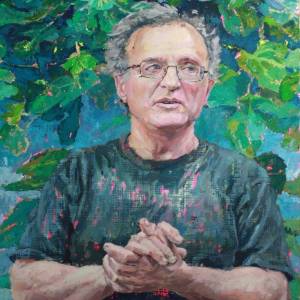Quaker & Anarchist
I was pedaling around the center of town, looking for my 300th blip, and one of the stops I made was the Friends Center at 15th & Cherry Streets, wich is 2 blocks North of City hall and the Occupy Philly encampment. This Friday I'll lead another Anarchist Walking Tour, and this statue at the entrance will be its last stop. It's a monument to Mary Dyer, the Quaker martyr of Boston.
The Friends Center is both the very old home of the Cherry Street Meeting, where the Religious Society of Friends worships, and there are modern extensions that house a Quaker library, the HQ of American Friends Service Committee (not part of the Quaker religion but a peace group originally founded by Quakers), and offices for other groups. The occupyers are now enjoying the help of the Friends Center for use of the restrooms and the kitchen. I have many memories of the center; too many to list, all good.
The reason I'll include this statue in my tour is because before Mary Barrett Dyer (1611-1660) embraced Quakerism, she was a friend and firm supporter of North America's first clearly anarchist leader, Anne Hutchinson. Hutchinson would hold supper meetings at her home on Monday evenings where she lead discussions of the previous day's sermon at the Puritan church. Her essential belief was that God spoke directly to individuals, and not through clergy. If one person was "with God," they were absolutely equal to all others who were also "with God," in God's eyes. The meetings became very popular for a while but eventually she enraged the Puritan theocrats because some of them felt it strayed from their dogma (which it did), because it was coming from female lips (which it was), and because it meant that we don't need clergy (which we don't). This turned into the "antinomian controversy" of 1637, which (briefly rendered) led to the banishment of both Dyer and Hutchinson, with many others, to Rhode Island, where they were well received and founded the settlement at Providence. Later Dyer, who had embraced Quakerism because it was compatible with "antinomian" beliefs (her accusers' term of abuse, meaning "opposed to the law"), returned to Boston to preach as a Quaker, and for this, the authorities hanged her at Boston Common.
Mary's last words were: "Nay, I came to keep bloodguiltiness from you, desireing you to repeal the unrighteous and unjust law made against the innocent servants of the Lord. Nay, man, I am not now to repent."
Indeed, the "Puritan Fathers" we're talking about were some of the most ruthless and brutal religious fanatics in American history, and in recent times they are compaired to the Taliban. But it did not have to develop that way. These martyrs started to cultivate their new ideas as prominent and respected members of their community. Poison-hearted men became jealous of their own petty powers and destroyed these two intellectual lights of Colonial New England.
Anne Hutchinson fled with her followers to Dutch territory because there was a chance of Boston taking over Rhode Island, and she was killed during a war between the native Americans and the white settlers at Pelham Bay, New York.
This bronze figure of Mary Dyer is a copy of one in Boston. The inscription on its plinth reads:
"Mary Dyer
Quaker Witness For Religious Freedom
Hanged On Boston Common 1660
Sylvia Shaw Judson, Sculptor"
There is a Memorial herb garden dedicated to both Mary Dyer and Anne Hutchinson at Portsmouth, Rhode Island.

Comments
Sign in or get an account to comment.


